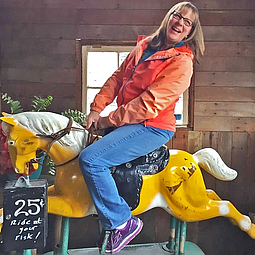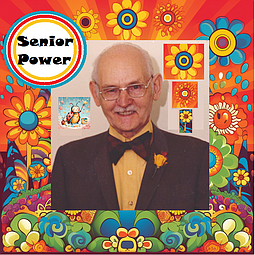Community Building as an Antidote to Social Isolation
April 27, 2024 at 7:05 a.m.
The most recent newsletter for King County's Retired and Senior Volunteer program (RSVP) is all about volunteering and building community. You can read one of the articles from this newsletter below or visit a link at the end of the article to read the entire newsletter.
“Community building is all about bringing people together and creating a sense of belonging,” states the MeltingSpot website, a self-described customer community platform.
It encompasses activities such as people seeking personal relationships to enhance their lives, building teams in workplaces, planning towns to increase residents’ quality of life, creating classrooms that foster belonging, and more.
And community building seems to be having a moment. “Community builder” appears in over 350 Seattle-area LinkedIn profiles for educators, marketers, housing companies, communicators, advocates, and more.
The following businesses and organizations even include it in their taglines:
▶ An online yoga practice: “Breaking down walls, building up community”
▶ A Bellingham bookstore: “Building community one book at a time”
▶ Solid Ground (RSVP’s nonprofit parent organization): “Building community to end poverty”
Perhaps the widespread interest in community building is in part a reaction to the recent COVID isolation. In May 2023, Google Trends reported that searches for “how to make friends,” “where to make friends,” and “where to meet people” reached an all-time high. In the same month, the U.S. Surgeon General released a report concerning an epidemic of loneliness and isolation. It details the health effects of loneliness and isolation: increased risk of cardiovascular disease, dementia, stroke, depression, anxiety, and premature death.
While COVID increased social isolation, the report identifies other contributing factors: decreases in marriage rates, family size, membership in clubs and religious groups, and use of personal technology.
“Despite current advancements that now allow us to live without engaging with others (e.g., food delivery, automation, remote entertainment), our biological need to connect remains,” says the Surgeon General. Not surprisingly, the highest rates of social isolation are found among people over age 65.
The good news is that people can take action to build social connections and community. The Surgeon General recommends the following to form new friendships and relationships:
▶ Invest time in nurturing your relationships through consistent, frequent, and high-quality engagement with others.
▶ Minimize distractions during conversations to increase the quality of time you spend with others.
▶ Seek out opportunities to serve and support others.
▶ Be responsive, supportive, and practice gratitude.
▶ Participate in social and community groups to foster a sense of belonging, meaning, and purpose.
▶ Seek help during times of struggle with loneliness or isolation by reaching out to a family member, friend, counselor, health care provider, or the 9.8.8 crisis line.
Friendship can spark community building, but it’s not a prerequisite. Clinical and community psychologist Dr. David McMillan (Nashville, TN) identifies four criteria defining a community: membership, influence, integration and fulfillment of needs, and shared emotional connection. Think of a sports team, a faith community, a hiking group, a political organization, or a neighborhood association.
For example, I recently became the secretary of my neighborhood association. I have made new acquaintances, some of whom may become friends. I feel a sense of belonging working with fellow board members, and I’m using my professional expertise in communications to perform my responsibilities as secretary. Board members are working well together; we’re aligned on goals and have successfully divvied up the work. I don’t yet feel a shared emotional connection, but that may develop in time.
Volunteering is an excellent vehicle for community building. Here’s how to get started.
1) Select an organization that aligns with your values and/or interests.
2) Show up frequently or on a schedule that facilitates regular contact with the same group of people.
3) Engage in the activity and with the people around you.
4) Add value by performing your responsibilities as directed and with respect.
“The factors that facilitate or become barriers to social connection can also reinforce either a virtuous or vicious cycle,” says the Surgeon General. Volunteerism or service and social connection form a virtuous cycle. The greater the community connection, the more likely people are to volunteer or serve. In turn, volunteerism and service increase connections to both community and individuals.
Lastly, while our focus is often on finding a group of people with whom we share interests, experiences, or life paths, the Surgeon General recommends that we “actively engage with people of different backgrounds and experiences to expand [our] understanding of and relationships with others, given the benefits associated with diverse connections.”
The National Museum of African American History and Culture echoes this, saying: “By considering each other’s lives and experiences, and perspectives, we allow a community to be not only about what we have in common but what makes us different.”
To read recent RSVP newsletters, visit the following link: Retired and Senior Volunteer Program - Solid Ground (solid-ground.org)





